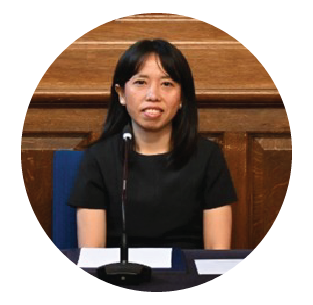THE CORRELATION OF OCCUPATIONAL STRESS WITH SUBJECTIVE FATIGUE WOMEN WORKERS IN WEAVING LOOM UNIT PT. X
Downloads
Background: An occupation with a high risk of work fatigue is an occupation in textile industry. The involvement of women in the textile industry sector in Indonesia is dominant. Women labors who run work on domestic and public sector will be less inclined a work fatigue. Subjective fatigue is the problem faced by women workers at production division weaving loom unit of PT. X. Purpose: This study aimed to determine occupational stress correlation with subjective fatigue in weaving loom unit PT. X. Method: Type of this observational analytic study was using a cross sectional design. The number of research subject were 95 people. An occupational stress is independent variable. The dependent variable is a subjective fatigue. Occupational stress measurement was using job stress indicator questionnaire. Subjective fatigue measurement was using Subjective Self Rating Test questionnaires. Chi square test used as significance test. All test used 95% confidence interval and significance level of p=0,05. Result: Chi square test result showed that occupational stress has significant association with subjective fatigue. Conclusion: An occupational stress has a positive correlation with subjective fatigue women workers in weaving loom unit PT. X.
Bultmann, U., Kant, I., Kasl, S.V., Schroer, K.A.P., Swaen, G.M.H., van den Brant, P.A. 2002. Lifestyle Factors As Risk Factors For Fatigue And Psychological Distress In The Working Population: Prospective Results From The Maastricht Cohort Study. J. Occup. and Envrn. Med. (JOEM). 44 (2). Pp.116-124.
Gibson, J.L., Ivanevich, J.M., dan Donnely, J.H. 1996. Organisasi, Perilaku, Struktur dan Organisasi, Editor: Lindon Saputra. Penerbit Binarupa Aksara. Jakarta.
Grandjean, E. 1998. General Fatigue. Encyclopedia of Occupational Health and Safety 4th Edition Volume I. International Labor Organization. Geneva.
Nieuwenhuijsen, K., Bruinvels, D., dan Frings-Dresen, M. 2010. Psychosocial Work Environment And Stress-Related Disorders, A Systematic Review. Occupational Medicine. 60: 277–286.
Silastuti, A. 2006. Hubungan antara Kelelahan dengan Produktivitas Tenaga Kerja di bagian Penjahitan PT. Bengawan Solo Garment Indonesia. Tesis. Universitas Negeri Semarang. Semarang.
Setyawati, L. 1994. Kelelahan Kerja Kronis, Kajian terhadap Kelelahan Kerja, Penyusunan Alat Ukur, serta Hubungannya dengan Waktu Reaksi dan Produktivitas Kerja. Disertasi. Program Pascasarjana. UGM. Yogyakarta.
Sudarwati, L. 2003. Wanita dan Struktur Sosial (Suatu Analisis tentang Peran Ganda Wanita Indonesia). Makalah. USU Digital Library. FISIP. Universitas Sumatera Utara. Medan.
Suma'mur, P.K. 2014. Higiene Perusahaan dan Kesehatan Kerja (Hiperkes) Edisi 2. Penerbit Sagung Seto. Jakarta.
Sumarni, D.W. 1996. Pengaruh Stressor Psikososial terhadap Depresi dan Produktivitas Kerja pada Tenaga Kerja Wanita Industri di Kotamadya Yogyakarta. Laporan Penelitian. DPP Fakultas Kedokteran UGM. Yogyakarta.
Sumarni, D.W. 1998. Rekreasi, Pengaruhnya terhadap Stres Psikososial dan Kelelahan Kerja. Tesis. Program Pascasarjana. UGM. Yogyakarta.
Sumarni, D.W., dan Setyawati, L. 1999. Pelecehan Tenaga Kerja Perempuan. Kerja Sama Ford Foundation dengan Pusat Penelitian Kependudukan, UGM. Yogyakarta.
Tarwaka, Bakri, S.H.A., dan Sudiajeng, L. 2004. Ergonomi untuk Keselamatan, Kesehatan Kerja dan Produktivitas. UNIPRESS. Surakarta.
Wambrauw, A. 2010. Stres Kerja Ditinjau dari Shift Kerja dan Beban Kerja pada Pekerja Wanita di PT. GE Lighting Indonesia Yogyakarta. Tesis. UGM. Yogyakarta.
Copyright (c) 2017 Journal Of Vocational Health Studies

This work is licensed under a Creative Commons Attribution-NonCommercial-ShareAlike 4.0 International License.
- The authors agree to transfer the transfer copyright of the article to the Journal of Vocational Health Studies (JVHS) effective if and when the paper is accepted for publication.
- Legal formal aspect of journal publication accessibility refers to Creative Commons Attribution-NonCommercial-ShareAlike (CC BY-NC-SA), implies that publication can be used for non-commercial purposes in its original form.
- Every publications (printed/electronic) are open access for educational purposes, research, and library. Other that the aims mentioned above, editorial board is not responsible for copyright violation.
Journal of Vocational Health Studies is licensed under a Creative Commons Attribution-NonCommercial-ShareAlike 4.0 International License














































